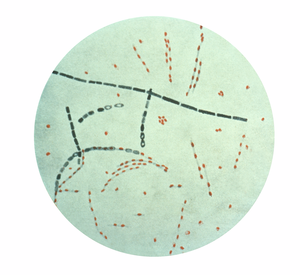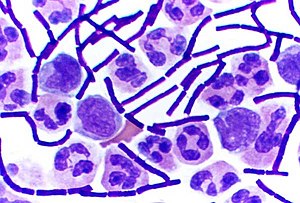The following post on clinical laboratory procedures is contributed by Pete Farmer, who holds advanced degrees in research biology and history, and is also an RN and EMT. For Part I of the series, click HERE.
* * *
As outlined in the first installment of this series, adopting an expeditionary or operational mindset can be enormously valuable for anyone interested in medical care under austere conditions. We noted that special operations medics, humanitarian aid workers, and others who practice healthcare in extreme environments have much to teach us about delivering care under less-than-ideal conditions. As previously noted, first-world medicine has evolved and depends upon an intricate high-tech infrastructure designed to provide services and support for the physician or other first-line provider. Among the most important of these services are clinical laboratory tests. In the field, however, you may have to depend upon only those resources available in your immediate surroundings. In all likelihood, that means having fewer laboratory tests and diagnostic procedures available as adjuncts to clinical decision-making. This is the bad news. The good news is that, using some fairly simple tools, one can perform some extremely useful laboratory tests and procedures, even under hardship conditions.
Among the most important items to be found in a field clinical laboratory is the basic light microscope. This humble and commonplace device, essentially unchanged from the time of Robert Koch and Louis Pasteur, and familiar to most anyone who has taken a high school or college introductory biology course, is a powerful clinical tool when employed properly. Rather than reinvent the microscope piece-by-piece for the following discussion, the reader is assumed to have a basic knowledge of what a light microscope is and how it functions (Note: readers in need of an introduction to or a refresher in basic light microscopy are directed to the links and notes at the end of this article).
For the purposes of the following discussion, we will use a light microscope similar to that in Figure 1, as our prototype. This design was state of the art in the 1930s, and is still used widely by students and other microscopists – although newer examples benefit from improvements in materials and workmanship. Please note that this design – a Zeiss – does not have a fixed electric light source, but uses a mirror to gather and reflect ambient light onto the specimen. Choose the type best-suited to your needs – powered or unpowered. If you will be using the microscope where you will not have access to a reliable source of electricity, the latter may be indicated.
Most light microscopes are compound, i.e., employ multiple ground-glass lenses to refract (bend) light to achieve magnification (enlargement) of an image. The magnifying capability of a compound microscope is the product of the magnification of its individual ocular and objective lenses. The former, also called the eyepiece, is the lens nearest the eye and typically has 10x (tenfold) magnification. The latter, called objectives, are the lenses nearest the specimen, and magnify at various selectable ranges, generally 4x, 10x, 40x and 100x power, or some combination thereof. Bench-top light microscopes generally do not magnify at greater than 1500x, except for specialized, non-standard applications not relevant here. Total magnification is determined by multiplying the ocular lens power times the objective lens power, i.e., a 10x ocular lens paired with a 100x objective gives a thousand-fold magnification (1000x).
Another important principle of microscopy is resolution, defined as the degree to which detail in the magnified image is retained. It is often described as the ability to distinguish between two points. In layman’s terms, resolution is the degree of detail which is visible and sharply delineated. Having 1000x magnification is of little use if the resultant image is blurred and not crisp-enough to allow visualization of fine detail. The maximum useful resolution of a typical light microscope is typically around 200 nanometers (1nm = 1 nanometer = 1×10 -9 meters), or slightly less than the size of most bacterial cells. Therefore, properly-used, a standard light microscope can be used to visualize most bacteria, protozoans, algae and fungi. Viruses cannot be visualized using std. light microscopy. Resolution (R) is dependent upon the wavelength of light passing through the specimen (slide – specimen – cover glass), as well as the properties of the lenses used in the microscope. The smaller the resolution number (value) of a microscope, the finer the detail visible. Bench-top light microscopes employ light in the visible or near-visible spectrum; blue light (wavelength 400 nm) – which has a shorter wavelength than red light (700nm) – gives better resolution than red light. Blue light is obtained by inserting a blue filter over a visible light source or by using a lamp which emits blue light.
Resolution and focus are important not only laterally, between adjacent points in a specimen, but vertically – along the long axis of the microscope. This characteristic is most often referred to depth-of-field. This construct, familiar to anyone experienced in photography, refers to the distance between nearest horizontal plane in focus in the foreground and the furthest-away horizontal plane in focus in the background. Inside the depth of field, the image is resolvable and in focus; outside of the depth of field, it is not. Depth of field is dependent upon numerical aperture and magnification of the objective lens; i.e. a 4x objective with numerical aperture of 1.0, has greater depth of field than a 100x objective with 0.95 aperture. Most often, one is trading less depth of field in return for greater magnification.
Numerical aperture (NA) value determines the degree of useful magnification of a given lens. It is dependent upon the refractive index (n) of the medium between the specimen and the front of the lens, and the angle of the most oblique light rays entering the objective lens. Air has a refractive index of 1, which limits resolution. However, the value of NA (useful magnification) can be increased by putting immersion oil between the cover glass on top of the specimen and slide, and the objective. Immersion oil has a refractive index (~ 1.5) more closely approximating glass than air, which allows higher magnification and better resolution. Using a 100x objective with immersion oil gives a useful magnification of approximately 1,500x, sufficient to view most bacteria. Most protozoans, algae, and fungi may be visualized without oil immersion.
Contrast is needed to distinguish an object from its background. Since microbes themselves are composed of a high percentage of water, and are usually viewed in aqueous (water) solution, a means of increasing the contrast between the specimen and its background is usually employed during specimen preparation. Typically, a chemical stain or other colored reagent is used for this purpose. Many staining techniques are more than a century old, but remain among the most commonly-used and effective means of visualizing and identifying microbes, tissue samples and other specimens.
A simple staining procedure employs a single stain, and generally imparts the same color to all cells and structures, regardless of type. The stain increases contrast by either coloring the cells but not the background, or the reverse – staining the background but not the cells themselves. The charge (positive + or negative -) of the stain molecule (chromophore) itself is also important. Most biological specimens are charged either positively or negatively (or both, in different regions). Similar charges repel, dissimilar charges attract. The stain methylene blue is positively-charged and basic (has a pH greater than 7), and thus adheres to the negatively-charged outer surface of certain types of bacteria. Nigrosine is an example of an acidic (pH less than 7), negatively-charged stain; it is repelled by negatively-charged bacteria and stains the background instead.
Differential staining employs a multi-stage staining process which utilizes the unique staining characteristics of different microbial cells and/or structures. Typically, a stain is used, and then “fixed” (made permanent) by use of heat or chemical treatment – and then washed off using the appropriate solvent. Counter-staining (staining with a different colored reagent) allows the microscopist to provide further contrast and differentiation with the background and the objects stained in the first-pass stain. The Gram Stain (to be covered further on in this series) is the most commonly used differential staining technique in microbiology.
Specimen preparation is exceedingly important for successfully microscopy; without it, the best equipment will not function optimally; with it, even modest equipment can perform well. Recall that successful visualization and magnification of the image being visualized depends on either reflected or transmitted light. The former uses a light source placed at an angle, and illuminates the specimen, which is then visualized. Anyone who has looked at a three-dimensional object under a stereoscopic microscope is familiar with this sort of light source, which is not all that different from indirect lighting used by a studio photographer. Transmitted light, on the other hand, must pass through the slide, specimen and cover glass (or slip) to reach the objective lens of the microscope. A light source directly below the stage (see Figure 1) is used, either an electric light or a mirror. Given the considerations of depth of field, thickness and uniformity are important considerations for any specimen which must be cut into extremely thin sections for viewing. A precision instrument called a microtome is used for this purpose. It is important to note that in the field, tissues requiring extensive preparation, such as multi-stage thin-sectioning or staining, are generally not examined because of the extensive equipment and supplies needed. Luckily, many useful microscopic preparations do not require such sophisticated methods. Many clinically-useful microscopic examinations of blood, sputum, saliva, urine and stool can be carried out in the field using simple sample preparation procedures.
Next installment, we’ll continue our examination of light microscopy with a discussion of sample preparation and some basic staining techniques.
Figure 1: Zeiss Laboratory Microscope (c. 1879)

(For additional images see: http://www.olympusmicro.com/primer/anatomy/introduction.html)
- http://www.ekcsk12.org/faculty/jbuckley/lelab/microscopeuselab.htm
This article is basic, but explains a typical student model microscope well
- http://science.howstuffworks.com/light-microscope.htm
This is a well-done survey which takes the reader from the basics through more advanced designs. You may by-pass the sections on fluorescence microscopy and other specialized subtypes.
- http://www.olympusmicro.com/primer/
- http://biology.fullerton.edu/facilities/em/IntroLightMicro.html
Explains the physics behind light microscopy, including a well-done section on optics.
- Carl Zeiss Microscopes – Zeiss is one of the most respected optical instruments firms in the world; Zeiss.com has a selection of bench-top light microscopes. There are many other reputable firms as well.
- http://www.microscopyu.com/articles/formulas/formulasfielddepth.html
Discussion of depth of field in microscopy, with calculations.
Note: Readers unfamiliar with or in need of a refresher in the basics of light microscopy may benefit from the following: (a) an introductory course in biology, with laboratory or (b) an introductory course in microbiology or bacteriology, with lab (c) some scientific supply houses sell student microscopy kits designed for at-home use; these include basic instructional materials and introductory projects; (d) there are also many excellent texts and websites available.
Reference cited: Atlas, Ronald M., Ph.D. “Principles of Microbiology,” Mosby: St. Louis, 1995.
Copyright © 2011 Peter Farmer














